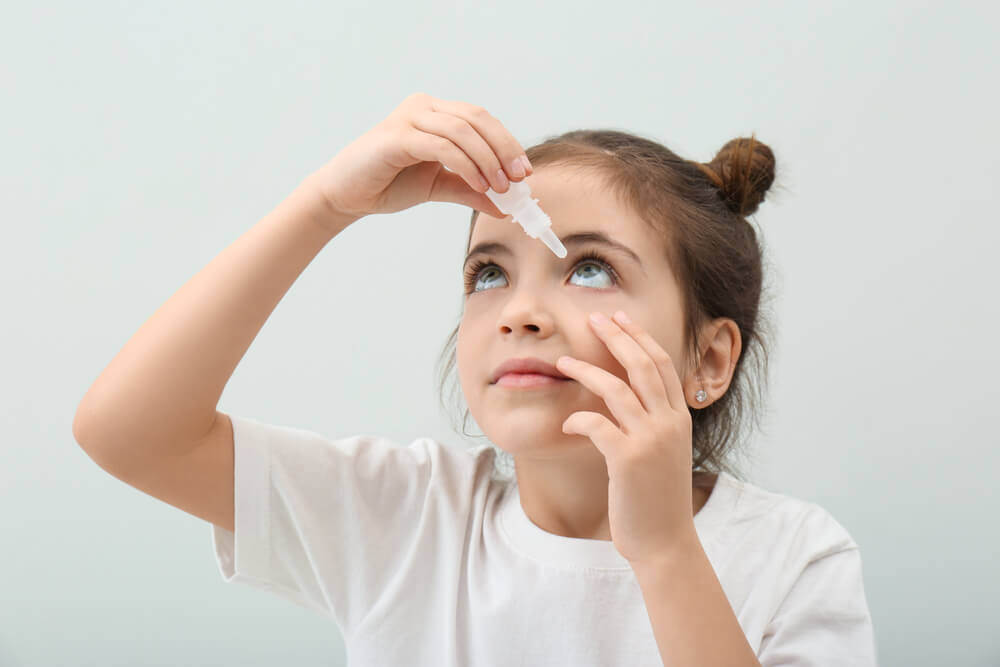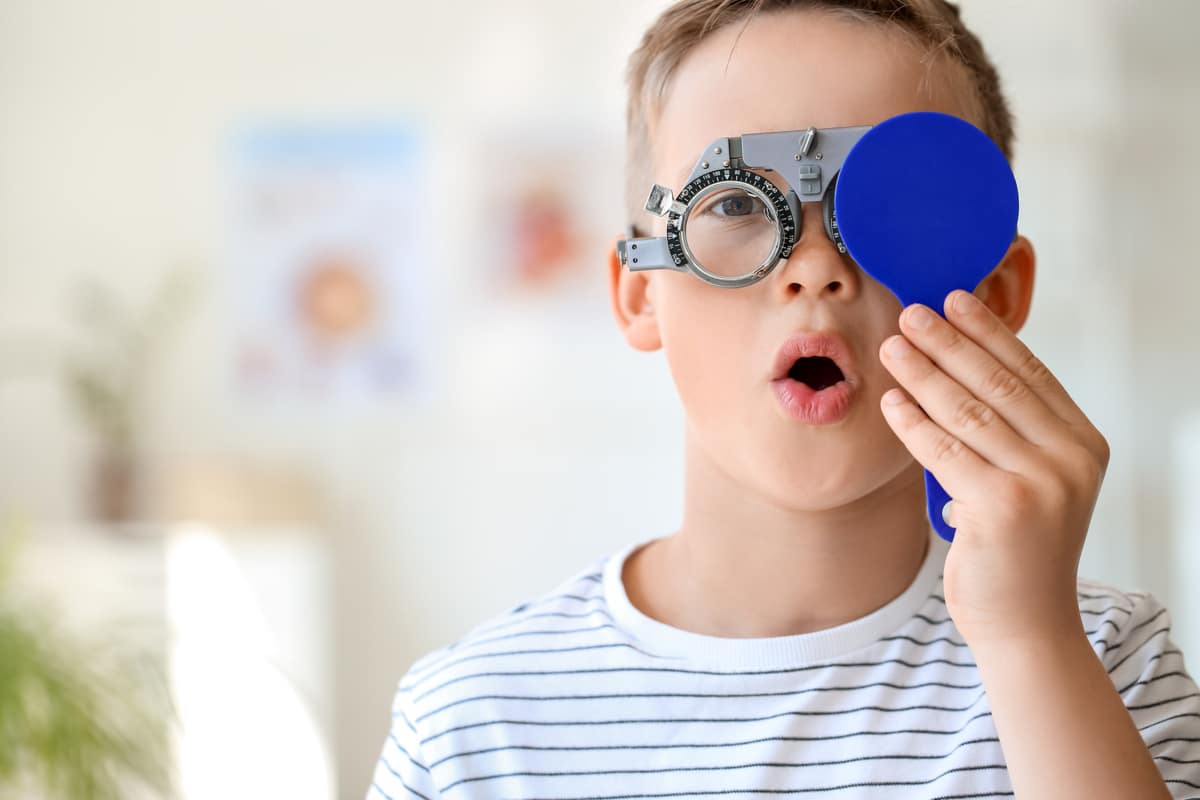There are many symptoms to look out for to identify possible vision problems in children. Keeping an eye out for these potential symptoms and talking to your child’s teacher are great ways to gauge if your child is possibly having problems with their vision. Here’s a closer look at some of the most classic signs and symptoms children will display when they need to have their vision checked by an eye doctor.
Blurry or Double Vision Problems in Children

Blurry or double vision can be a sign of vision problems in children. Blurry vision may indicate a refractive error, such as nearsightedness, farsightedness, or astigmatism. Refractive problems happen when the shape of your eye does not curve light correctly, resulting in blurry vision at various distances. Double vision, or seeing two of the same object, can be a sign of an eye muscle problem, which can cause the eyes not to work as a team.
If a child is experiencing blurry or double vision, they may have difficulty seeing objects clearly or have trouble with depth perception. This can affect their ability to perform daily activities, such as reading, writing, and playing sports.
You can show your child what it looks like to have double vision by pulling up a picture online or asking your child about what they’re seeing.
Falling Behind on Milestones
Vision plays a critical role in a child’s overall development, including their ability to learn, communicate, and interact with the world around them. Falling behind on developmental milestones can be a sign of vision problems in children. An eye doctor will check up on your child’s vision and identify any possible vision problems.
Children with vision problems may have difficulty seeing facial expressions or following visual cues, which can impact their language development and communication ability. Vision problems can also affect a child’s ability to see details, such as the letters on a page or puzzle pieces, impacting their fine motor skills.
Vision problems can impact a child’s ability to learn and retain new information, impacting their cognitive development and academic performance. Vision problems can also impact a child’s ability to see their surroundings clearly, impacting their gross motor skills, such as balance and coordination. Children with vision problems may have difficulty interacting with their peers, recognizing facial expressions, or following social cues, which can impact their social development.
Talk to Your Child
If you believe that your child could have a vision problem, it’s important to talk to your child’s teacher about your concerns. Teachers are often the first to notice signs of vision problems in children, as they can impact a child’s ability to learn and participate in the classroom. Your child’s teacher will likely be one of the first people to notice if your child’s vision problems are preventing your child from keeping up with their peers.
Schedule a meeting with your child’s teacher to discuss your concerns about your child’s vision. Share with the teacher the signs and symptoms of vision problems that you have noticed in your child, such as squinting, rubbing their eyes, or falling behind on developmental milestones. You can ask your child’s teacher if they’ve noticed any of these signs in your child or if your child has complained about having difficulty seeing the board or reading a book.
Looking Deeper into Signs of Vision Problems in Children

If you notice any of these signs in your child, it’s important to schedule an eye exam with a qualified eye doctor. You can make a huge difference in your child’s life by identifying possible vision problems and taking your child to receive the treatment they need. Early detection and treatment of vision problems can help prevent long-term vision problems and improve your child’s quality of life.
To learn more about the signs of vision problems in children, schedule an appointment today.




